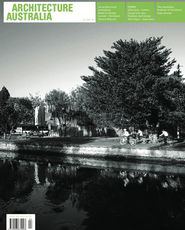
Are the days of the glorious, triumphant, individualistic architect – as immortalized in Ayn Rand’s 1943 novel The Fountainhead – numbered? While “individualistic” architects will doubtless continue to surface, the profession in this century must accept and acknowledge that splendid, complex buildings are produced through significant teamwork.
This teamwork extends beyond architectural collaboration to work with other design and construction disciplines. Building information modelling (BIM) systems are already transforming the documentation of buildings and, with advances in interoperability, will allow architects, engineers and other consultants to more readily layer (and assimilate) their information. By working “on the same page”, design, structure and services can be fully integrated, with little margin for error of the kind that occurs through the present system of document reworkings and the obvious problem of inadequate transfer of information between the parties.
The US Government recently introduced regulations that require all federal government departments to accept only 3D CAD electronic plans for future construction work. Denmark requires the use of BIM models on projects over €5M, and will soon introduce a €1M base. Norway expects to mandate BIM in the near future; government and industry guidelines, new commercial arrangements and legal contexts are ready to support wider adoption. In Finland, the use of standards-based BIM became mandatory last November for all government projects, including renovations.
All approaches aim to minimize the risk of error in compliance, documentation and architectural delivery. And, in turn, smaller firms are being encouraged to merge to ensure that they will be eligible for larger projects. Assuming that this trend becomes universal, small Australian practices will need to consider suitable strategies for alliances, mergers and growth. Properly handled, the benefits will be real.
Those of you who have reflected on the merits of personal partnership will know that two well-organized individuals can achieve far, far more working together for common purpose than as single operators. Doubtless small practices will continue to serve niche markets, but in my view they are already being excluded from larger opportunities.
It is common practice on commercial and institutional projects for clients to reassure themselves that a chosen architect has suitable experience. In my experience, a firm is not usually considered without proven ability evident in relevant realized projects. With no background in, say, schools or cinemas, one has little chance of being considered for same. It is also very difficult for firms of four to five people to be considered for larger projects requiring rapid production of extensive documentation.
To improve their eligibility, such firms will need to consider a joint venture or association with another practice. Initially it is always best to collaborate – Architect in Association is a useful opening option – and if it works well, and the synergies are real, formal merging may be a good outcome.
Practices will increasingly need to verify their diverse range of skills and access to sophisticated documentation and information modelling tools. In many places, including NSW, registration is linked to mandatory continuing professional development and I foresee a requirement for practices to demonstrate access to BIM or similar, as well as being up to date on industry codes and current construction technology, et cetera. With similar patterns observable in medicine and law, we need to be aware of the likelihood for our own profession, and be ready.
On 1 July, the Australian Institute of Architects – as the Institute is now known on a day-to-day basis – launched a public education campaign to improve community awareness of the benefits of using an architect. The Institute is keen for there to be a much greater understanding of the role of an architect as well as delivering broader educative messages about the profession. Phase 1 of the campaign (1 July to 31 December) will convey messages about architects making the world a better place to live, in targeted mainstream as well as industry-related publications. The campaign will also receive coverage through the Institute’s publications.
The launch of the public education campaign coincides with the refreshing of the Institute’s own image. Accompanying the new trading name (Australian Institute of Architects) is a change in our visual identity. It is well worth visiting the Institute’s revitalized website and, as always, we are keen to hear your views on the changes.
Howard Tanner
National President, Australian Institute of Architects















